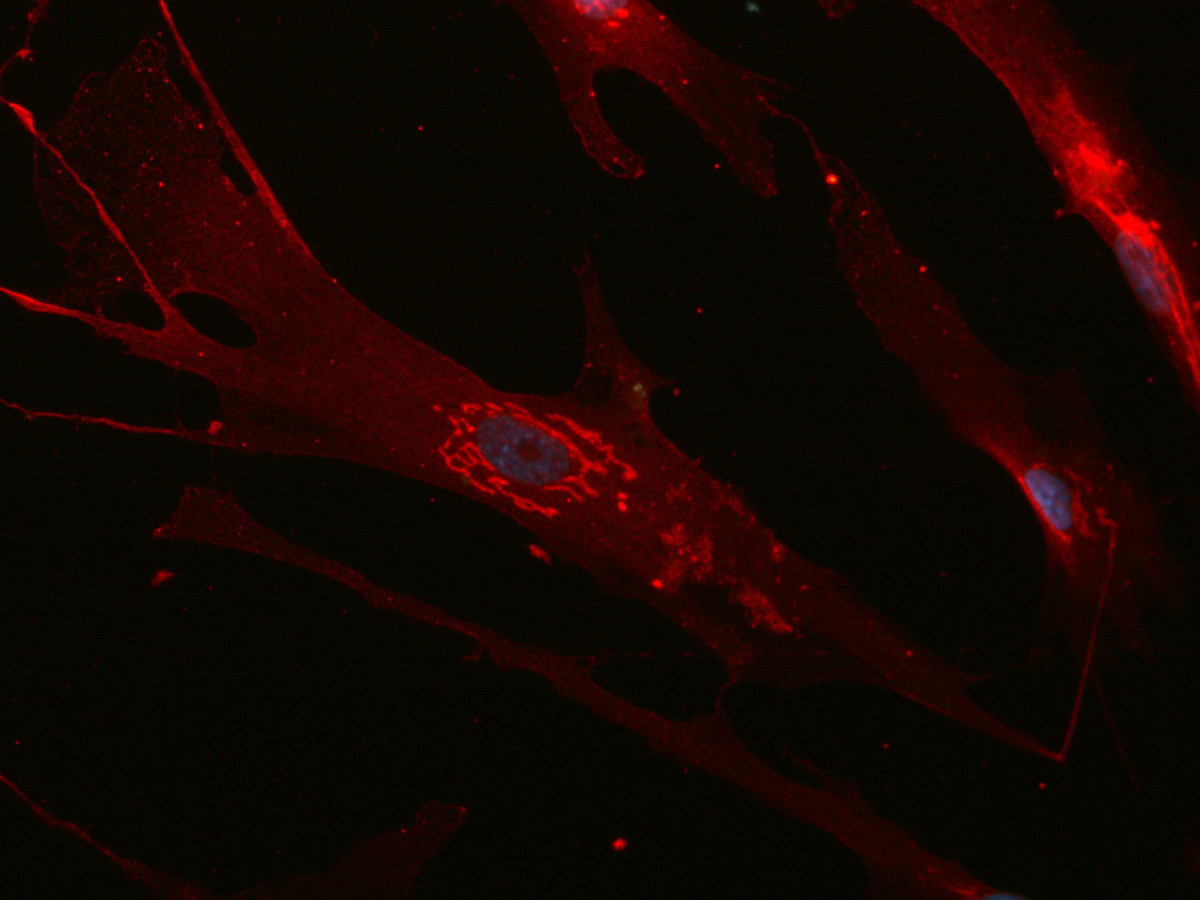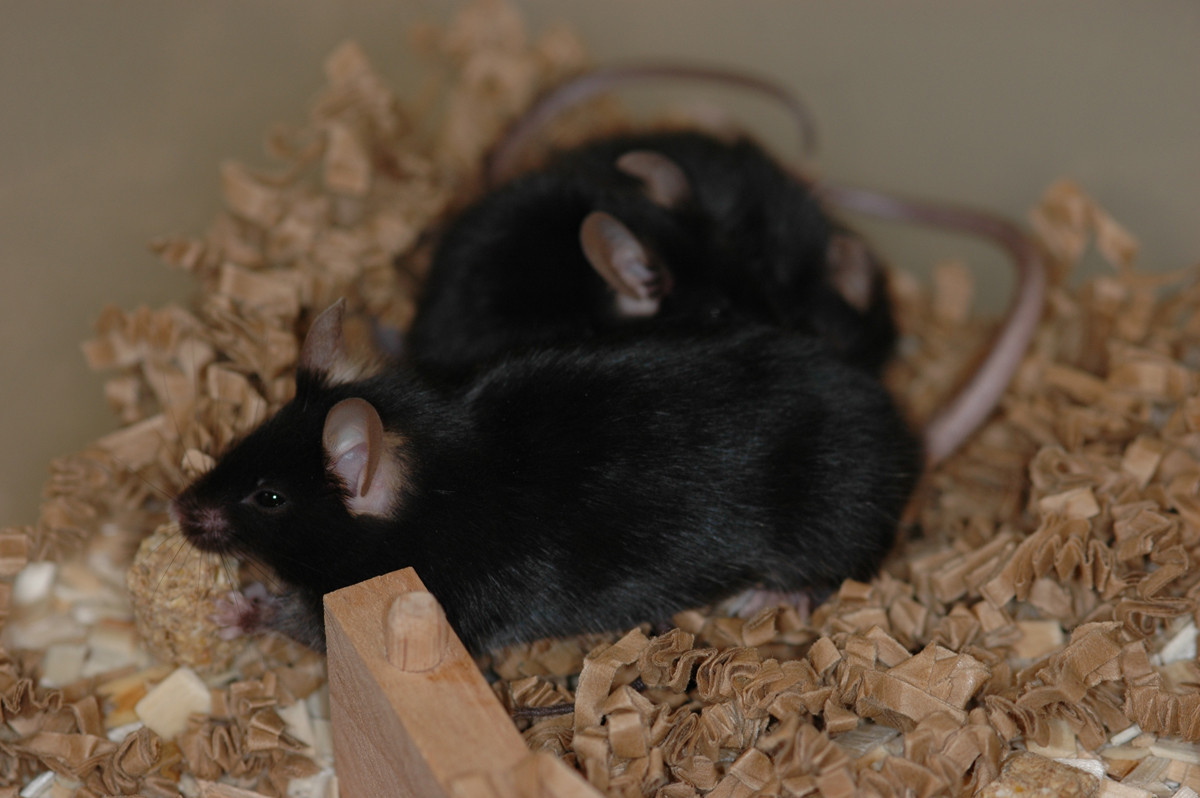
With collaborators in Spain and the creators of the model, we are investigating the physiology of the muscle glycogenosis V (McArdles disease) mouse model and how the metabolic signaling is altered in these mice and the effect on glycogen build-up.
As the main model for developing therapies to muscular dystrophies, we are using the Duchenne muscular dystrophy mouse model, the mdx mouse. We are developing therapies more broadly applicable to muscular dystrophies by focusing on how muscle regeneration can be boosted, rather than attempting to cure one particular muscular dystrophy. We have found that growth factor mediated activation of muscle stem cells leads to increased regeneration in the mdx mouse, a decrease in creatine kinase and an increase in muscle mass. We are currently investigating how the regeneration boosting therapy can be improved by circumventing the myostatin-mediated negative feedback on regeneration signaling.
All animals are housed at the University of Copenhagen Faculty of Health and Medical Sciences animal facility.
References
- Nielsen TL, Vissing J, Krag TO. Antimyostatin treatment in health and disease: The story of great expectations and limited success. Cells (2021). PMID 33802348.
- Almodóvar-Payá A, Villarreal-Salazar M, de Luna N, Nogales-Gadea G, Real-Martínez A, Andreu AL, Martín MA, Arenas J, Lucia A, Vissing J, Krag T, Pinós T. Preclinical Research in Glycogen Storage Diseases: A Comprehensive Review of Current Animal Models. Int J Mol Sci 21, 9621 (2020). PMID 33348688.
- Brolin C, Lim EWK, Grizot S, Yavari N, Krag TO and Nielsen PE. Approaches for Systemic Delivery of Dystrophin Antisense PNA in the mdx Mouse model. Nucleic Acid Therapeutics (2020). PMID 32678992.
- Tarrasó G, Real-Martinez A, Parés M, Romero-Cortadellas L, Puigros L, Moya L, de Luna N, Brull A, Martín MA, Arenas J, Lucia A, Andreu AL, Barquinero J, Vissing J, Krag TO and Pinós T. Absence of p.R50X Pygm read-through in McArdle disease cellular models. Dis Mod Mech 13, dmm043281 (2020). PMID 31848135.
- Real-Martinez A, Brull A, Huerta J, Tarrasó G, Lucia A, Martin M, Arenas J, Andreu A, Nogales-Gadea G, Vissing J , Krag T, De Luna N, Pinos T. Low survival rate and muscle fiber-dependent aging effects in the McArdle disease mouse model. Sci Rep 9, 5116 (2019). PMID 30914683.
- Nielsen TL, Pinós T, Brull A, Vissing J, Krag TO. Exercising with blocked muscle glycogenolysis: Adaptation in the McArdle mouse. Mol Genet Metab. 123, 21-27 (2018). PMID 29174367.
- Krag TO, Pinos T, Nielsen TL, Andreu AL, Vissing J. Differentiated glucose metabolism in mice and humans affected by McArdle disease. Am J Physiol Regul Integr Comp Physiol 311, R307-14 (2016). PMID 27280431.
- Krag TO, Pinos T, Nielsen TL, Brull A, Andreu AL, Vissing J. Differentiated muscle involvement in mice and humans affected by McArdles disease. J Neuropathol Exp Neurol 75, 441-454 (2016). PMID 27030740.
- Krag TO & Vissing J. A new mouse model of Limb-Girdle muscular dystrophy type 2I homozygous for the common L276I mutation mimicking the mild phenotype in humans. J Neuropathol Exp Neurol 74, 1137-46 (2015). PMID 26574668.
- Hauerslev S, Vissing J, Krag TO. Muscle atrophy reversed by growth factor activation of satellite cells in a mouse muscle atrophy model. PLoS One 9(6):e100594 (2014). PMID 24963862.


Seneste kommentarer